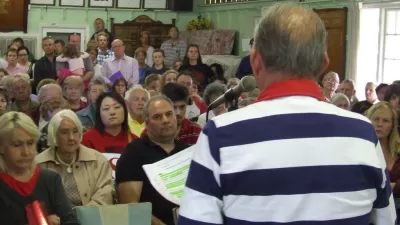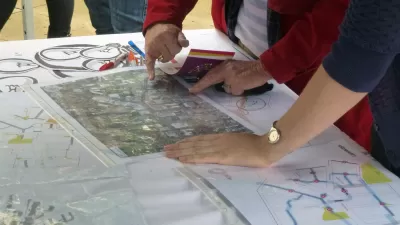Public meetings often disprove the notion that communities have a unified stance on any issue. With this in mind, we must move past trying to find consensus and focus on uplifting the most marginalized voices.

When it comes to community development projects in poor urban neighborhoods, practitioners and scholars often ask a seemingly simple question: what does the community want? Since the 1960s and the War on Poverty, the community development field has embraced (to at least some extent) the idea of “community control.” Rooted in the Black Power Movement, community control originally referred to Black people reclaiming control over schools, businesses, and other institutions that affect Black neighborhoods. Today, community control is a normative idea that the community—broadly defined—should have a say and determine neighborhood priorities. While developers sometimes agree to formal contractual obligations like community benefits agreements (CBAs), no mechanism of achieving community control has been more common than the public meeting.
Critiques of participatory processes abound. Political scientists Katherine Einstein, David Glick, and Maxwell Palmer find that public meeting participants tend to be white homeowners—meaning public meetings will disproportionately serve white homeowners’ interests. Sociologist Michael McQuarrie argues that community-based organizations, motivated by organizational survival, use participation and consensus organizing to establish legitimacy and curry favor with funders. As a result, participation tends to support elite authority rather than challenge it. Focusing on affordable housing debates in the Bay Area, New York Times journalist Conor Dougherty shows how public meetings are in effect veto points that can block new development. New projects generally require community agreement in order to move forward, and so all it takes is a handful of opponents to signal a lack of consensus. By design, then, public meetings give the people who say “no” a much louder voice than the people who say “yes.”
For most observers, the solutions are technical. More meetings. Better attended meetings. Differently designed meetings. In short, the challenge is to fine-tune public meeting practices in ways that elevate the authentic voice of the community.
While conducting research for my book, tentatively titled Constructing Community and forthcoming with Princeton University Press, I came to question these and other assumptions. I spent four years conducting fieldwork in some of Boston’s highly segregated and disadvantaged neighborhoods. I wanted to understand who made important decisions about affordable housing, public transit, economic development, and open recreational space. I was particularly interested in the relationship between public participation and community control.
I argue that no participatory process can accurately reflect the voice of the community, no matter how well run. The reason is fundamental: there is no such thing as “the” community. As sociologists Mary Pattillo and Monica Bell persuasively show in separate studies, opinions and experiences with institutions vary, even in demographically segregated neighborhoods. To say that “the community” is in support of anything is a misnomer.
Community development practitioners, by contrast, generally assume there is in fact a community that has a voice; community control requires the community to control development, after all. When those in power circumvent participating community members, it is clear community control has not been achieved. But how do we evaluate community control when some community members might oppose a project that others pursue—did the community control the project in those cases?
...
FULL STORY: It’s Time to Move On From Community Consensus

Study: Maui’s Plan to Convert Vacation Rentals to Long-Term Housing Could Cause Nearly $1 Billion Economic Loss
The plan would reduce visitor accommodation by 25,% resulting in 1,900 jobs lost.

North Texas Transit Leaders Tout Benefits of TOD for Growing Region
At a summit focused on transit-oriented development, policymakers discussed how North Texas’ expanded light rail system can serve as a tool for economic growth.

Why Should We Subsidize Public Transportation?
Many public transit agencies face financial stress due to rising costs, declining fare revenue, and declining subsidies. Transit advocates must provide a strong business case for increasing public transit funding.

How to Make US Trains Faster
Changes to boarding platforms and a switch to electric trains could improve U.S. passenger rail service without the added cost of high-speed rail.

Columbia’s Revitalized ‘Loop’ Is a Hub for Local Entrepreneurs
A focus on small businesses is helping a commercial corridor in Columbia, Missouri thrive.

Invasive Insect Threatens Minnesota’s Ash Forests
The Emerald Ash Borer is a rapidly spreading invasive pest threatening Minnesota’s ash trees, and homeowners are encouraged to plant diverse replacement species, avoid moving ash firewood, and monitor for signs of infestation.
Urban Design for Planners 1: Software Tools
This six-course series explores essential urban design concepts using open source software and equips planners with the tools they need to participate fully in the urban design process.
Planning for Universal Design
Learn the tools for implementing Universal Design in planning regulations.
Ascent Environmental
Borough of Carlisle
Institute for Housing and Urban Development Studies (IHS)
City of Grandview
Harvard GSD Executive Education
Toledo-Lucas County Plan Commissions
Salt Lake City
NYU Wagner Graduate School of Public Service





























